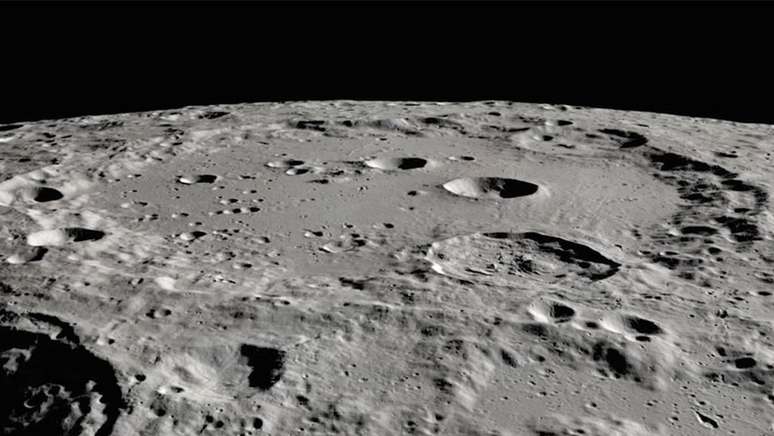There are those who believe that the Moon is empty, all because of a misinterpretation of a NASA experiment. Understand this story better!
The most famous conspiracy theory about our natural satellite says so the human moon landing was a hoax, but there is another even more exotic: the theory that the Moon is hollow. That’s right, “Hollow Moon” adherents believe that there is nothing inside the celestial body closest to Earth, a belief born from the misinterpretation of a real experiment on the Moon. NASA.
In 1969, the Apollo 12 mission landed on the Moon to continue exploration and scientific experiments on the lunar surface. That was the second manned mission to the satellite and the first to make a precise landing at a pre-set location.
Astronauts Pete Conrad, Richard Gordon and Alan Bean were launched into space on a Saturn V rocket from Cape Canaveral. The landing (the name given by scientists to the moon landing) took place on November 19, 1969. In total, astronauts Conrad and Bean spent about 31 hours on the moon, while Gordon remained in orbit in the command module. They brought back photographs, rocks, soil samples and parts of Surveyor 3, an unmanned probe sent to the lunar surface two years earlier.
The mission was quite peaceful, mainly because humanity had already conquered the moon landing, in the Apollo 11 mission. The astronauts were relaxed and even enjoyed themselves during their tasks. But one of his last acts gave rise to the craziest Moon conspiracy theory.
The Moon “rings like a bell”

After completing the mission on the lunar surface, the pair of astronauts climbed into the landing module to return to orbit and re-board the service module. Then, one last experiment would be performed: return the lander to the Moon.
The goal was to make the module collide with some violence to measure the earthquake and thus better understand the structure and composition of the Moon. The impact was equivalent to the detonation of a ton of TNT and triggered the first man-made “moonquake”.
On the lunar surface, Conrad and Bean had installed the Passive Seismic Experiment (PSE) seismometer at the landing site. When the module collided with the Moon, the equipment recorded the resulting vibrations and the scientists were surprised: the lunar quake was bigger and lasted much longer than they had expected.
The problem is that, at the time, scientists used certain figures of speech to describe how strange earthquakes on the Moon were. “The moon rang like a bell,” said Clive R. Neal, an associate professor of civil engineering and geological sciences at the University of Notre Dame.
The seismic vibrations peaked eight minutes after impact and took an hour to dissipate. Hence the comparison to a bell, but of course this doesn’t mean the Moon is hollow inside.
Even so, conspiracy theorists have misinterpreted the figure of speech used by scientists and have perpetuated the idea of the hollow moon. Some have even spread the idea that the Moon is actually an alien spacecraft in disguise. However, there is a much better scientific explanation for the tolling of the lunar “bell”.
Why is the moon shaking so much?
The seismometers of the Passive Seismic Experiment remained active until 1977, recording other lunar earthquakes produced by astronauts and other natural ones, produced by the constant fall of asteroids.
This means that lunar quakes occur fairly regularlyas space rocks hit the surface there more often than on Earth, due to the absence of an atmosphere capable of burning the debris.
According to scientists, prolonged bell-like earthquakes occur on the Moon due to its composition. On Earth, where there is a lot of liquid water, rocks are wet enough to act like a “sponge,” absorbing some of the impact caused by seismic waves.
This is not the case on the Moon, where there is no liquid water and therefore shocks are not easily absorbed. As with any other type of dry object, such as a bell, reverberations travel much more easily and it takes time for the shock energy to be depleted.
The Moon is geologically active
Therefore, four types of lunar earthquakes were identified: deep lunar earthquakes under 700 km of lunar earthquakes; lunar earthquakes caused by meteorites; thermal lunar earthquakes; and shallow lunar quakes, which occur 20 to 30 km deep. Some of the latter even reach 5.5 on the Richter scale.
Deep, shallow, and thermal tremors indicate this the moon is geologically activeand it may also require extra preparation for the next astronauts to go to the lunar surface, mainly because NASA’s goal is to build a base for humanity to stay there.
There are still mysteries about the Moon’s core, however, even though it’s known not to be hollow. NASA is already working on a new experiment that will try to map the lunar core and collect more data on the tremors and, who knows, discover their composition.
These surveys may still take some time, but regardless, we can safely say that our natural satellite is not empty. And we don’t even need to dig to prove it: the very physics of the formation and evolution of celestial bodies says that this would be impossible.
Trending on Canaltech:
- It seems that the earth’s core has stopped rotating. What are the consequences of this?
- The oldest art in the world was not created by humans
- What are the “electric stones” of the Democratic Republic of the Congo?
- Top 10 crime movies to watch online
- See what the new Windows 11 File Explorer will look like
- Amazit Bip 3 Pro | A simple but good and cheap watch
+The best content in your email for free. Choose your favorite Terra newsletter. Click here!
Source: Terra
Camila Luna is a writer at Gossipify, where she covers the latest movies and television series. With a passion for all things entertainment, Camila brings her unique perspective to her writing and offers readers an inside look at the industry. Camila is a graduate from the University of California, Los Angeles (UCLA) with a degree in English and is also a avid movie watcher.

![Such a wonderful sun in advance: Summary of the episode of April 22, April 22 [SPOILERS] Such a wonderful sun in advance: Summary of the episode of April 22, April 22 [SPOILERS]](https://fr.web.img4.acsta.net/img/61/dc/61dc9701915eb8d74668b878c69b2bf6.png)



